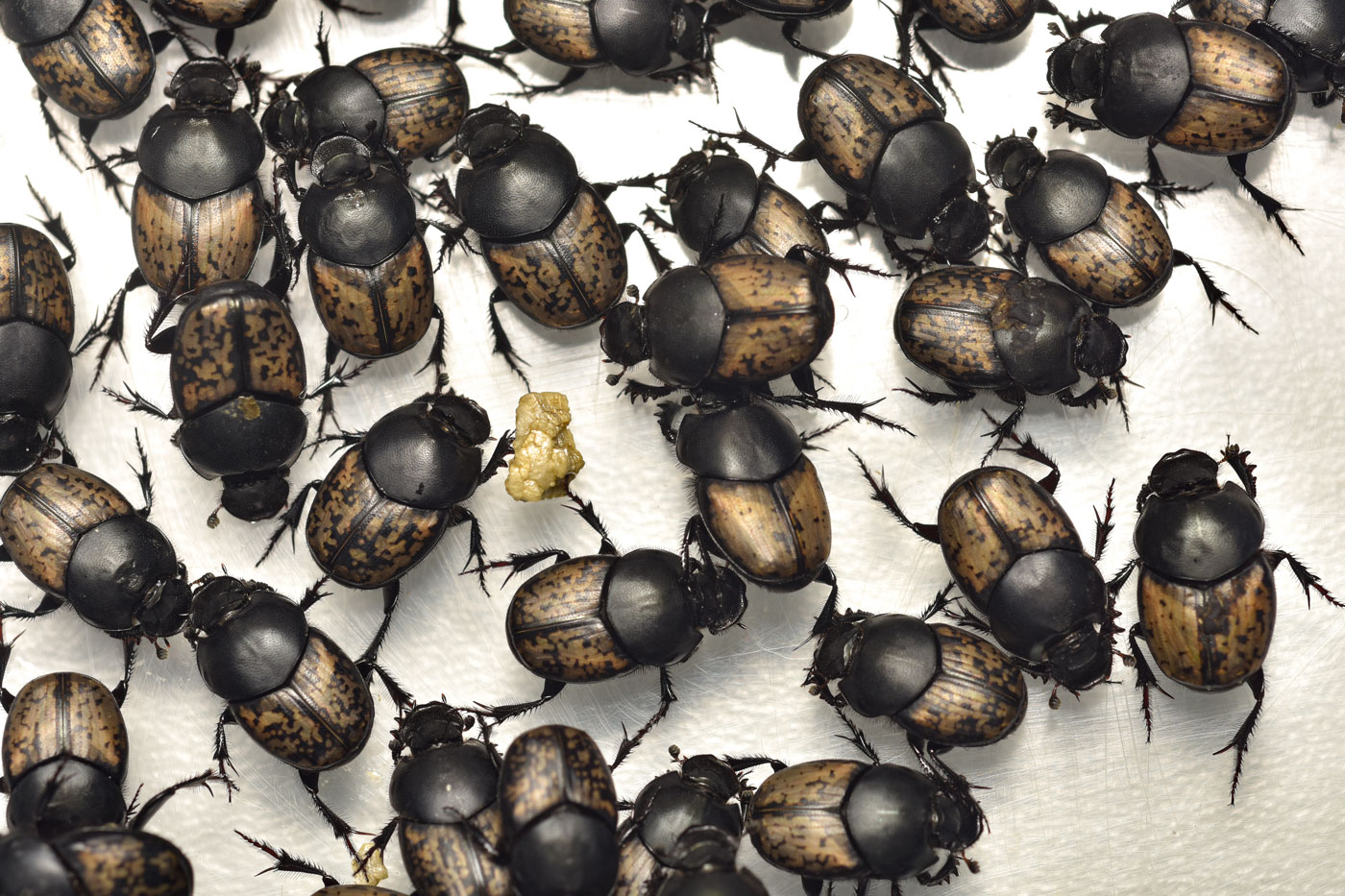Media release
12 September 2020
Milestone achievement as new dung beetle species importation trumps international COVID logistical challenges.
A landmark stage in the Dung Beetle Ecosystem Engineers (DBEE) project has been reached this month with a new species of dung beetle landing on Australian shores.
Over 300 of the Onthophagus andalusicus beetles arrived safely at Canberra’s CSIRO importation facility last week after starting their journey from their native Morocco in 2019. The beetles initially undergo stringent cleaning and rearing in a facility based in Southern France prior to their arrival in Australia. The offspring of O. andalusicus are then securely packaged in France and delivered to Australian biosecurity officials for review, before arriving at the CSIRO beetle importation facility in Canberra where strict procedures ensure no potentially harmful microbes or other pests are introduced into Australian ecosystems in association with the new beetles.
O. andalusicus is the second species to be imported to Australia through the DBEE project, which aims to import three new species to fill current seasonal and geographic gaps of dung beetle activity in southern Australia. These introduced species are credited with the significant reduction of fly and nematode pest numbers in Australia, improvement of pasture growth and recycling of soil Carbon and nutrients.
COVID-19 restrictions, international border closures and nation-wide lockdowns initially caused some logistical problems with importation of the second species for the project team. However, O. andalusicus arrived safely at the CSIRO site on-time and with a clean bill of health.
DBEE’s lead of dung beetle importation, CSIRO’s Dr Valerie Caron says the arrival of the beetles heralds a triumph for the project.
“The efforts of all those behind this project have been tremendous in the face of the challenges of COVID-19, including border closures, national lockdowns and fewer international freight flights. Amazingly, we’re still on schedule”
Onthophagus andalusicus is active in late winter and spring, in both beef and sheep dung – a huge plus for mixed farmers. Hailing from northern Africa, it’s estimated the beetle will thrive in climatic conditions similar to those in central and south Western Australia, southeast Southern Australia, northwest Victoria and central and southwest New South Wales.
DBEE’s lead of training, education and information delivery, Charles Sturt University Professor Leslie Weston, says an abundance of dung beetles could enhance pasture quality across southern Australia while reducing pest burdens, producing an estimated net benefit to farmers in excess of $100/ha in the more intensively grazed areas.
“These beetles will help fill the spring gap in beetle activity across southern Australia and complement the first species of beetle the DBEE team has successfully imported, mass-reared and released, Onthophagus vacca. Importantly, Onthophagus andalusicus typically doesn’t compete with native species which prefer kangaroo and native animal dung, meaning these beetles can safely cohabitate with existing natives” she says.
Understanding the ecological impact of releasing a new species is a lengthy and complicated part of the assessment process, and care is taken to ensure the beetles have little to no impact on the native ecosystems.
Previous experience has shown us that hundreds of thousands of beetles need to be released in order to establish a new species successfully, therefore several generations are raised under lab and protected field conditions to bulk up numbers.
“The mass rearing and release of the Onthophagus vacca has been very successful to date, with more than 10,000 beetles reared at the research facility at Charles Sturt in Wagga Wagga in recent months with over 5,000 released on more than 30 farms across southern Australia. We expect the mass rearing of Onthophagus andalusicus to generate similar results with time” says Professor Weston.
The research is led by Charles Sturt University through funding from Meat & Livestock Australia (MLA) through the Australian Government Department of Agriculture’s Rural Research & Development for Profit program. The project is also supported by eight partner organisations: The University of Western Australia, CSIRO, Manaaki Whenua – Landcare Research, The University of New England, Dung Beetle Solutions International, Warren Catchments Council, Mingenew-Irwin Group and the Western Australian Department of Primary Industries and Regional Development.
For more information about the DBEE project visit https://www.dungbeetles.com.au/ .
END
Media enquiries
Georgie Robertson | The Regional PR Co.
M: 0417 217 869 | E: georgie@regionalpr.com.au
